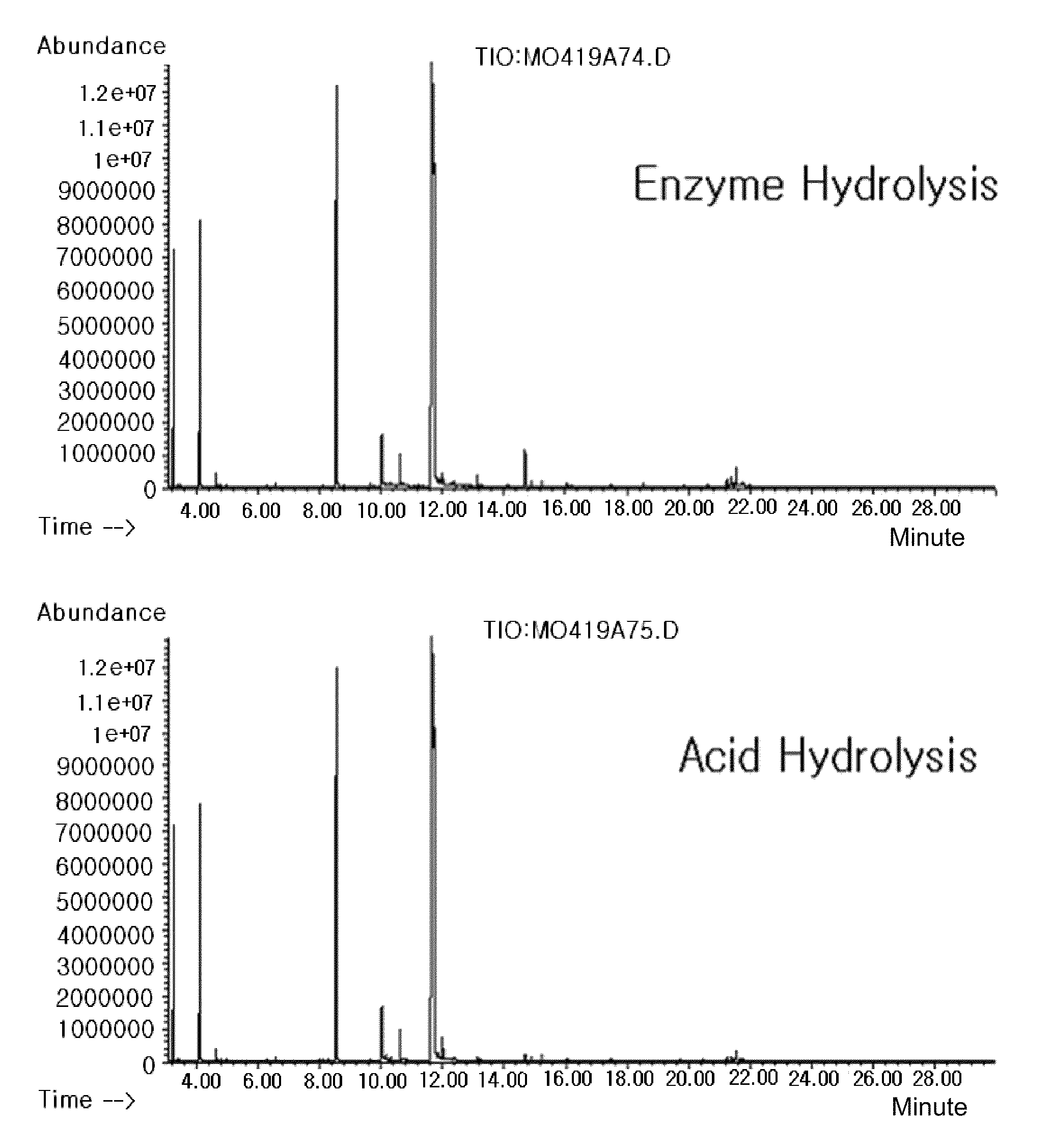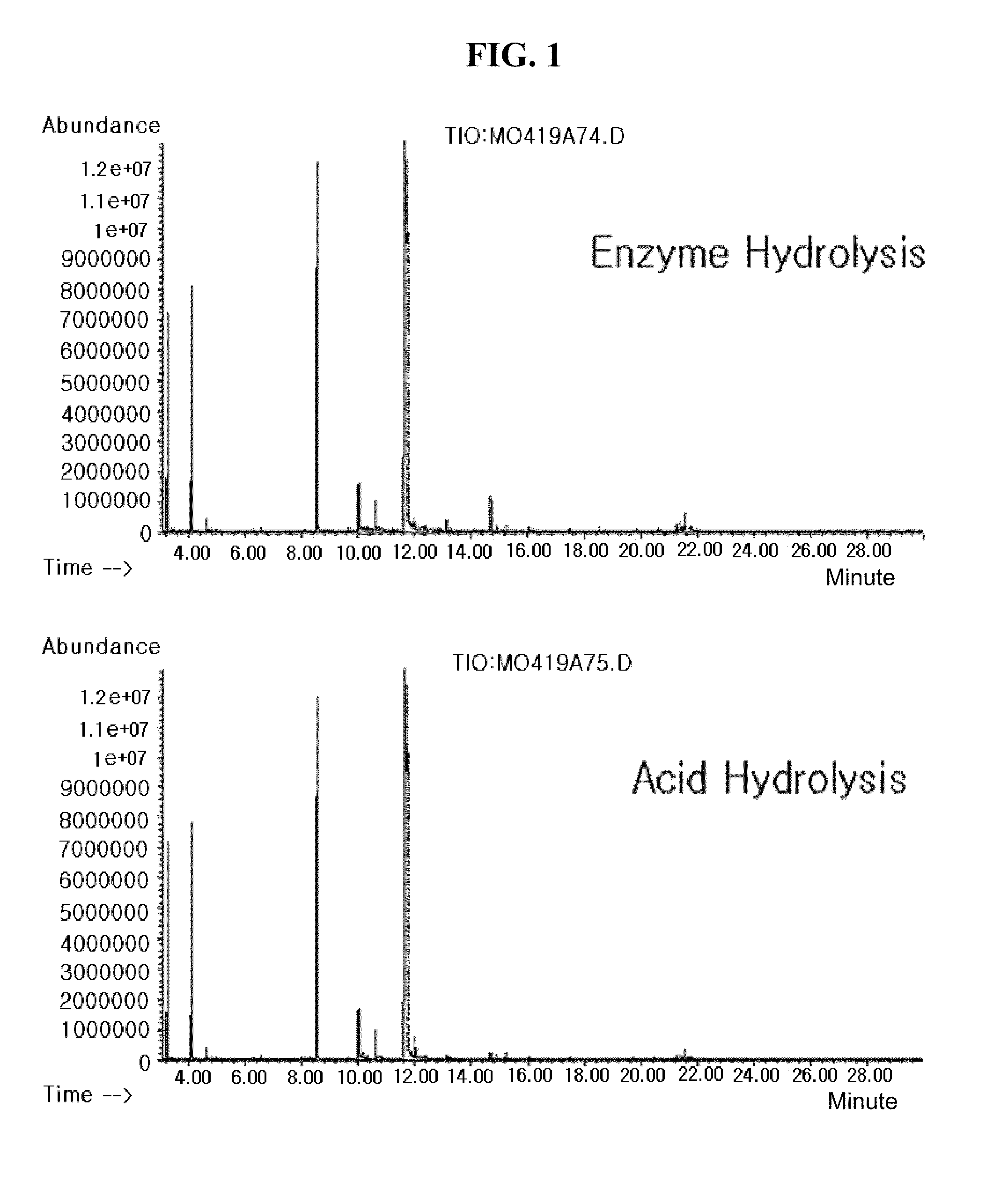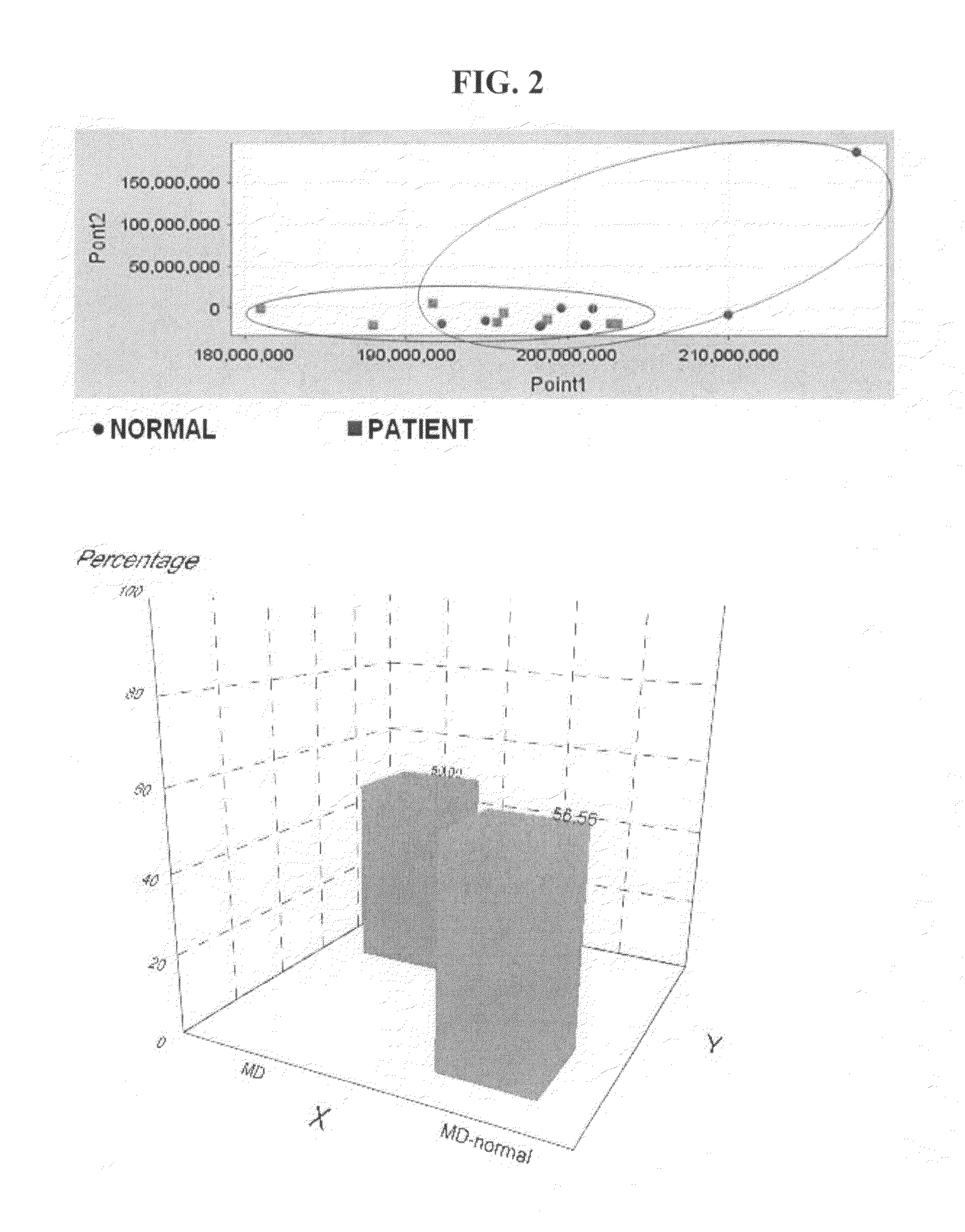Method for analysis metabolite difference between biological samples
a biological sample and metabolite technology, applied in chemical methods analysis, instruments, withdrawing sample devices, etc., can solve the problems of difficult quantitative analysis, difficult to acquire a reference standard of all metabolites, and research has not been almost applied in the field of methods for analysing metabolite differences between biological samples
- Summary
- Abstract
- Description
- Claims
- Application Information
AI Technical Summary
Benefits of technology
Problems solved by technology
Method used
Image
Examples
embodiment 1
Extracting a Metabolite from a Biological Sample with a Standard Extraction Method and Analyzing it with a Chromatography Analysis Device
[0027]1.1 Obtaining the Fraction 1
[0028]Strata X® (Phenomenex, Torrance, Canada; styrene-divinyl benzene polymer having a surface specially treated for keeping an analysis material from being discharged from a cartridge using a π-π interaction) cartridge was mounted to a solid phase extraction vacuum manifold, which was added with methanol 1 ml to activate it and then washed with water 1 ml, thereby carrying out a pre-treatment. Urine 1 ml, which was obtained from 10 prostatic hypertrophy patients (average age: 60±5 years) and 10 normal males (average age: 58±7 years) whose age is matched with that of the patients, was loaded to the cartridge, water 1 ml was again added to wash it and then methanol 4 ml was made to flow, thereby discharging an analysis-object material. Among them, only 0.3 ml was taken and evaporated and dried with a vacuum rotary ...
embodiment 2
Converting the Analysis Result of the Chromatography into Numerical Values which can be Statistically Processed
[0039]The areas or heights of the peaks occurring in the chromatograms of the respective fractions represent the concentration or the quantity of the metabolites in the sample. Since the peaks are not always generated as a predetermined number at a fixed time, they cannot be applied to the statistical process in which the number of variables should be constant.
[0040]In order to solve the problem, the total analysis time of 30 minutes were divided at an interval of 1 minute so that the time interval was same, and one of the peaks, which occurred for 1 minute, having the largest area was determined as a representative value, thereby conducting a statistical process.
embodiment 3
Statistically Verifying a Difference Between Two Biological Samples Using the Converted Numerical Values
[0041]As the statistical process method for the global metabolomics, the principal component analysis and the discriminant analysis were used. A leave-one out method (when the number of samples is assumed to be 100, a control group is made for the 99 samples and it is determined whether the remaining one sample belongs to a normal group or a disease group) was adopted for the discriminant analysis. It was measured an accuracy in discriminating the unknown sample as a normal person or a prostatic hypertrophy patients with the results obtained from the discriminant analysis.
[0042]As a result, clustering patterns discriminating between the group of the normal people and the group of patients were exhibited in the principal component analysis of the fraction 2 (fraction obtained by the liquid-liquid extraction at pH 5.2 after the solid phase extraction, FIG. 3) and the fraction 3 (fra...
PUM
| Property | Measurement | Unit |
|---|---|---|
| pH | aaaaa | aaaaa |
| pH | aaaaa | aaaaa |
| thickness | aaaaa | aaaaa |
Abstract
Description
Claims
Application Information
 Login to View More
Login to View More - R&D
- Intellectual Property
- Life Sciences
- Materials
- Tech Scout
- Unparalleled Data Quality
- Higher Quality Content
- 60% Fewer Hallucinations
Browse by: Latest US Patents, China's latest patents, Technical Efficacy Thesaurus, Application Domain, Technology Topic, Popular Technical Reports.
© 2025 PatSnap. All rights reserved.Legal|Privacy policy|Modern Slavery Act Transparency Statement|Sitemap|About US| Contact US: help@patsnap.com



